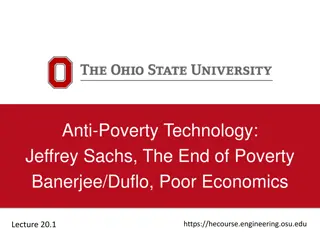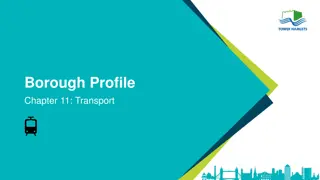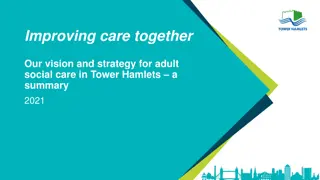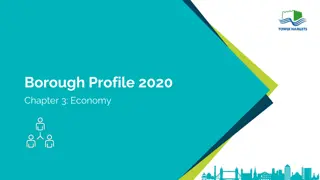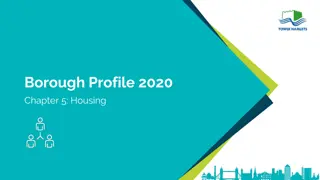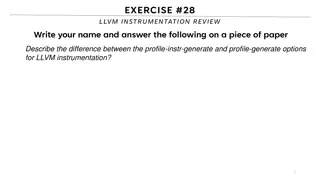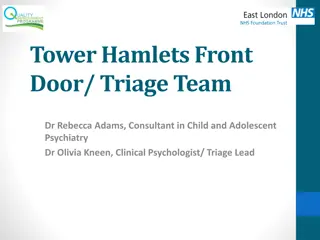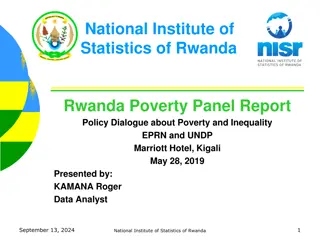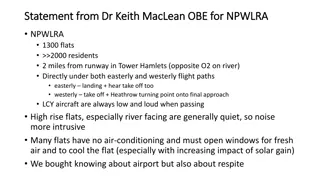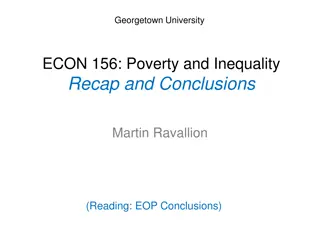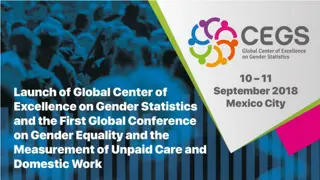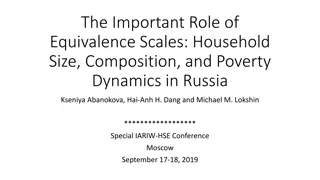Tower Hamlets Borough Profile - Poverty Data 2020
Tower Hamlets in 2020 saw a significant decrease in deprivation levels compared to 2015-2019, although 60% of the borough remains in the 30% most deprived areas of England. Child and elderly poverty rates are notably high, with in-work poverty also on the rise. Various welfare reforms have impacted residents, with larger families and in-work individuals being most affected. The COVID-19 pandemic further exacerbated worklessness, potentially leading to long-term impacts on poverty levels.
Download Presentation

Please find below an Image/Link to download the presentation.
The content on the website is provided AS IS for your information and personal use only. It may not be sold, licensed, or shared on other websites without obtaining consent from the author. Download presentation by click this link. If you encounter any issues during the download, it is possible that the publisher has removed the file from their server.
E N D
Presentation Transcript
Borough Profile 2020 Chapter 4: Poverty
Summary Tower Hamlets became significantly less deprived between the 2015 and the 2019 Indices of Multiple Deprivation, moving from 10thto 50thon the rank nationally but 60% of the borough still within the 30% most deprived parts of England. Deprivation among children and older people is much higher than deprivation as a whole. Other data, such as children in low income families continues to show a very high extent of poverty in the local population. As with other parts of the country, in-work poverty appears to be an increasing issue with a high proportion of means tested financial support now going to people in work 29,000 employees earn less than the London Living Wage. Although it is difficult to assess the impact of welfare reform overall, it is clear that some reforms such as the benefit cap and the freeze in the local housing allowance has impacted on thousands of residents. Larger families who received more means tested support and who require larger properties are the most affected. The Covid 19 pandemic has had a significant impact on worklessness which may have long term impacts on the extent and nature of poverty and deprivation within the borough.
Indices of Multiple Deprivation Tower Hamlets IMD Rankings, local authority summary measures 1= most deprived, 317 = least deprived 2015 Ranking 2019 Ranking Change 10 50 +40 Rank of Average Score 6 27 +21 Rank of Average Rank 3 57 +54 Extent 80 134 +54 Local Concentration 24 175 +151 Proportion in most deprived 10% Source: MHCLG, English Indices of Deprivation 2019 Lessening Deprivation on almost all measures relative to other parts of England Virtually all of the borough has become relatively less deprived (142 of 144 areas). Only 1.4% of the borough is now in 10% most deprived areas in England (Had been 40% in 2010).
Indices of Multiple Deprivation Map Tower Hamlets was the 50th most deprived local authority area in England (of 317) on the Indices of Multiple Deprivation employment domain in 2019, having been 10th most deprived in 2015. 2015 2019
Child Poverty 27.3% of children in Tower Hamlets were in relative low income families in 2018/19 which was the highest rate in London and well above the average for Great Britain. 21.4% of children were in absolute low income families also the highest rate in London. Children in low income families - % of children in relative and absolute low income families, 2018/19 30.0% 27.3% Source: Children in low income families, Department for work and pensions, 2018/19 25.0% 21.4% 20.0% 18.4% IDACI (Income Deprivation Affecting Children) Rank fell from 1st to 14th on Rank of Score, but remained 1st on Rank of Rank meaning less areas with the very highest deprivation but consistently high deprivation across the borough. 15.2% 15.0% 10.0% 5.0% 0.0% 72% of all children are in a family that receives either child tax credit or working tax credit. Tower Hamlets Great Britain Relative Poverty Absolute Poverty
Child Poverty Income Deprivation Affecting Children
Older People Poverty 44% of older people live in income deprived households, the highest proportion in England and more than double the average. Percentage of older people living in income deprived households 50 45 44 40 Source: MHCLG, Indices of Multiple Deprivation, Income Deprivation Affecting Older People Measure (Average Score) This is the only area of the IMD with no change in relative level of deprivation. 35 30 Older people are particularly sensitive to fuel poverty overall 11.2% of Tower Hamlets households are in fuel Poverty but for households of older people this is almost certainly higher. 25 23 20 15 17 10 5 0 Tower Hamlets London England
Older People Poverty Income Deprivation Affecting Older People
In Work Poverty 63% of families receiving tax credits are in work. Families receiving Working and/or Child Tax Credits 2017/18 29,000 (11.8%) of employee jobs in Tower Hamlets were below the London Living Wage of 10.20 in 2018. 7300, In work Families 37% Out of work Families 12600, Source: HMRC Child Benefit Statistics August 2018 and Child and Working Tax Credit Statistics 2017- 18 63% Almost half (47%) of housing benefit claimants were in work HOUSING BENEFIT CLAIMANTS 47% In Work London Living Wage 29,000 jobs 53% Not In work






